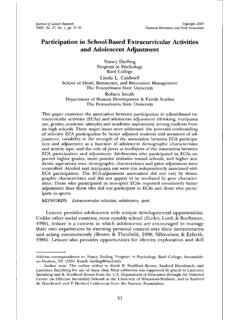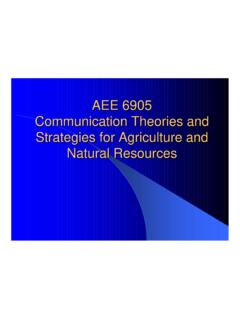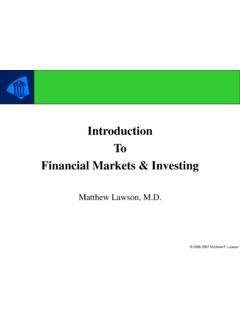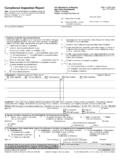Transcription of Worksheet #8 Empirical Formulas H O N O 4I
1 Worksheet #8 Empirical Formulas 1. State the Empirical formula for each of the following compounds: a) C4H8; b) C2H6O2; c) N2O5; d) Ba3(PO4)2; e) Te4I16 2. What is the Empirical formula for a compound that contains mol chlorine and mol oxygen? 3. What is the Empirical formula for a compound that contains carbon, hydrogen and % oxygen? 4. An oxide of nitrogen contains N and O. What is its Empirical formula? Molecular Formulas 5. The molar mass of the oxide of nitrogen in question #9 is 92 g/mol. What is its molecular formula? 6.
2 A chloride of silicon contains chlorine. If its molar mass is 269 g/mol, what is its molecular formula? 7. Cortisol is a steroid hormone that is used to reduce inflammation. It has a molar mass of g/mol, and is comprised of C, H, and O. What is its molecular formula? 8. Menthol is a substance commonly used in cough drops. It has a molar mass of g/mol and is comprised of C, H, and O. What is its molecular formula? Formulas from Mass Data 9. A new compound containing xenon and fluorine was isolated. If g of xenon reacted, and g of the new compound was isolated, what is its Empirical formula?
3 10. A sample of g of elemental sulfur (S) is combined with fluorine to give a compound with the formula SFx, a stable, colorless gas. If you have isolated g of SFx, what is the value of x? 11. A sample of g of germanium is combined with excess chlorine to form g of a product with the formula GexCly. What is the Empirical formula of the product? Chapter 7 The Simplest, or Empirical , Formula Section A Determine the Empirical formula for each compound whose percentage composition is shown below. 1. 43% C and 57% O 2. K, Cr, and O 3. C, O, N, and the remainder H 4.
4 K, Cl, and the remainder O 5. Sn, Fe, C, and N Determine the molecular formula for each compound whose percentage composition is shown below. 6. Hg and the remainder Cl, with a molecular weight of g/mol. 7. N, H, S, and O. The molecular weight is g/mol. The formula is known to contain the NH4+ grouping. Write your formula accordingly. 8. Hg, N, O, and H2O, with molecular weight of g/mol Answers to Worksheet #8 Empirical Formulas To calculate Empirical Formulas , follow the steps outlined below: (assume percentages given in the problems are grams) Step 1: convert to moles Step 2: divide each by the lowest number of moles Step 3: (only if necessary) multiply all by the same factor in order to obtain whole numbers.
5 And are considered whole numbers Step 4: The numbers obtained in Step 2 (or Step 3 if it were necessary) are the subscripts in the formula . 1. a) CH2; b) CH3O; c) N2O5; d) Ba3(PO4)2; e) TeI4. 2. Step 1 is already done, so we will start with step 2: Step 3 is necessary: Cl = 1 2 = 2 O = 2 = 7 Step 4: Cl2O7 dichlorine heptaoxide 3. Step 1: gmolggmolO gmolg====== Step 2: Step 3 isn t necessary. Step 4: CH2O2 4. Step 1: Ogmolgg==== Step 2: Step 3: isn t necessary. Step 4: NO2 Molecular Formulas To calculate molecular Formulas , follow the steps outlined below: Step 1: calculate Empirical formula (see above) Step 2: divide the molecular formula mass given to you in the problem by the Empirical formula mass Step 3: multiply the subscripts in the Empirical formula by the number obtained in Step 2.
6 5. Step 1 was done in question #9, so we will start with Step 2: Step3: N = 1 2 = 2 O = 2 2 = 4 N2O4 dinitrogen tetraoxide 6. Step 1: % Si = 100% = = gmol Si gmolggmolmolClSimolmol======== Step 2: Step 3: Si = 1 2 = 2 Cl = 3 2 = 6 Si2Cl6 disilicon hexachloride 7. Step 1: gmolH gmolggmolO gmolgmolmolmolCHOmolmolmol============ C = 5 = 21 H = 6 5 = 30 O = 1 5 = 5 Empirical : C21H30O5 Step 2: Step 3: all subscripts will be the same C21H30O5 Cortisol 8. Step 1: gmolH gmolgmolmolO gmolgmolmolmolCHOmolmolmol============ Empirical : C10H20O Step 2: Step 3: all subscripts will be the same C10H20O Menthol Answers to Worksheet #8 Formulas from Mass Data To find Formulas from mass data, make sure that you have the mass of all substances that reacted.
7 Remember that the mass of the reactants = mass of products. Next, convert the grams of reactants to moles, and find the ratio of the reactants. Multiply if necessary to make the ratio into whole numbers. 9. Mass of F that reacted = g g = g , there are 2 F's to every1Xe. The compound isXeF . MolFgFmolFggFmolXemol====== 10. Mass of F that reacted = g g = g , there are 6 F's to every1S. The compound is SF . MolSgSmolSggFmolSmol====== 11. Mass of Cl that reacted = g g = g ,4 '1 .. gClmolCl MolGe gGemolGeggClmolSo thereare Cl stoevery Ge Thecompound isGeClGemol====== Answers to Chapter 7 The Simplest, or Empirical , Formula 1.
8 CO ( ) 2. K2 CrO4 ( ) 3. C2O2NH5 ( ) 4. KClO3 ( ) 5. Sn2 FeC6N6 ( ) 6. Hg2Cl2 === ) ( 7. (NH4)2S2O8 === ) ( 8. Hg2N2O6 D 2H2O [OHHgNO)OH( = == ) (]










